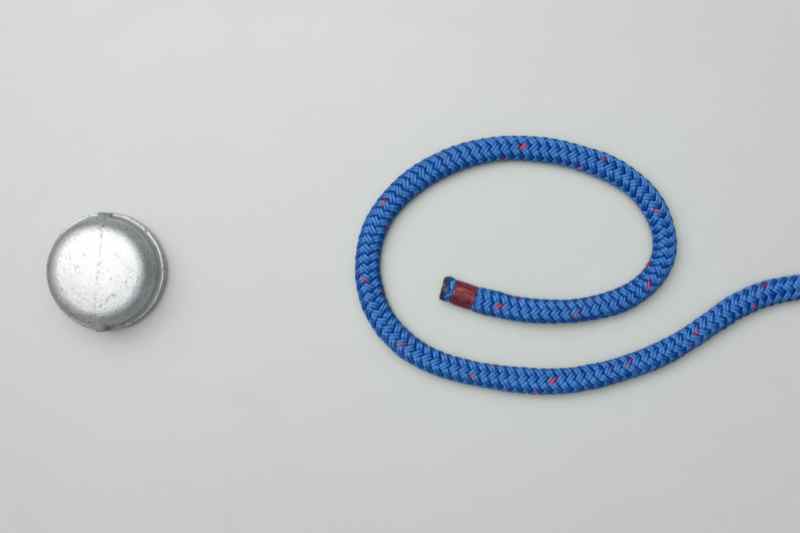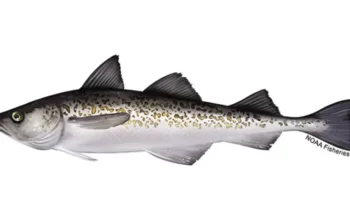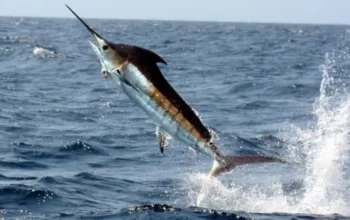A noose is a loop at the end of a rope in which the knot tightens under load and can be loosened without untying the knot. Only where the end of the rope can be passed over the loop can the knot be used to fasten a rope to a post, pole, or animal.
But, how to tie a Noose?
For more information, continue reading.
Table of Contents
How To Tie A Noose?
Learn how to tie a noose in 3 simple steps which include:
- Make a loop, placing the working end at the top. The end of your rope that is actually in use is then represented by the functioning end. In order to create a 4-6 in (11-16 cm) loop when beginning the noose knot, be sure to wrap the working end around the standing end. This step is important for twine, string, and fishing line. In light of this, you must keep in mind that the procedure is the same regardless of the material you use.
- The standing portion of your rope must be slid just a little bit over the center of the loop. As soon as the two working ends meet, kindly pitch the joint there. The standing end prevents it from unraveling. So, curl a section of the working end over the loop you just created. When that happens, it will naturally land in the middle of the opening. A pretzel-like appearance and identicality are required for the two loops you create.
- The standing component should then be driven through the loop’s center. After that, grab the standing portion that is perched on top by extending your arm under the first loop you made. As you drive away from the standing end and further away from the loop, you must maintain the joint’s pinch with your left hand.
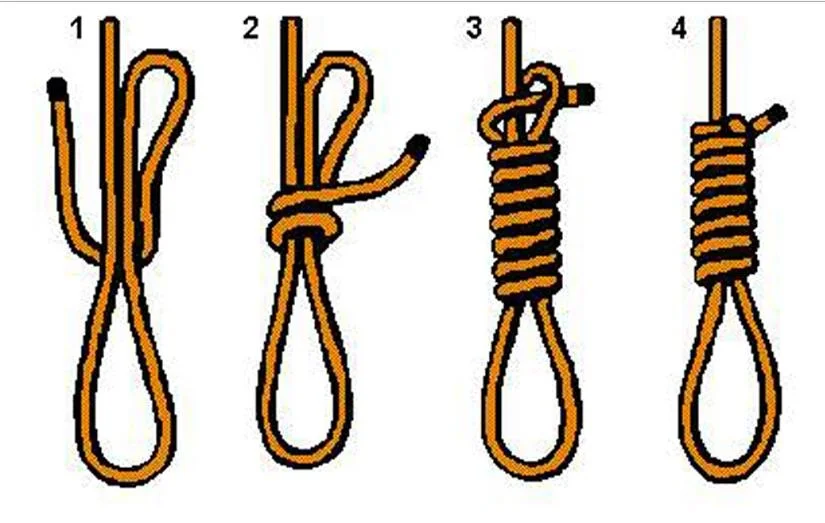
What Is A Noose Used For?
Around the world, criminals are frequently hung using a noose knot. Additionally, it is utilized for knitting, securing a hook, and animal snares.
The basic Noose Knot is identical in structure to the Except that the long end—and not the short end—is used to form the bight that will be inserted in the slip knot. Small animals have been caught using it as a snare. It is not the Hangman’s Knot. The Noose Knot, also known as a Slip Knot, is a common knot that is used in the Arbor Knot and in knitting as the first loop when casting on. It can also be used to take initial control of the string when tying a package.
With several turns wrapped around the loop, the Hangman’s Knot is similar to the simple noose. Its alleged humanitarian benefit for hanging was that proper use was meant to result in a broken neck, hastening death. Here (see below), it is purposefully not illustrated.”Noose” Name Confusion: It is unfortunate that “noose” is used in a number of ways: 1. The knot mentioned on this page; 2. a label for loop knots that tighten when under tension; and, 3. applied to the Hangman’s Knot occasionally. Even worse, many people mistakenly believe that the Uni Knot (Duncan Knot) and the Hangman’s Knot are interchangeable. We recommend using “Noose” for this knot and the correct names, e.g., “Running Bowline” or “Uni Knot”, etc., for other noose-like knots.
Tying it: In the Noose Knot animation, a portion of the long end is tucked through a loop. By passing the end around the object and using the short end to tie a Half Hitch around the long end, you can achieve the same result almost as quickly. Tied this way it is the first part of one version of the Butcher’s Knot used to secure meat for roasting – where again, just as in knitting, it is often misnamed a “Slip Knot”.Risk: Although the Noose knot is not a Hangman’s Knot, it can still be fatal. Never ever should it be too snug around someone’s neck. The knot has the power to bind and severely restrict blood flow. It is questioned whether it is unlawful to describe the Hangman’s Knot in a number of Snopes Questions. It isn’t.
But because a noose is often used as a form of intimidation, laws like New York’s Article 240.31 and Louisiana’s 2009 Title 14 both forbid the display of one. Hangman’s Noose is specifically mentioned in the Louisiana Bill. The New York State Article uses the generic “noose”.
“Noose” Name Confusion
It is unfortunate that “noose” is used in a number of ways: 1. a. the knot mentioned on this page; b. 2. a label for loop knots that tighten when under tension; 3. applied occasionally to the Hangman’s Knot. Even worse, many people mistakenly believe that the Uni Knot (Duncan Knot) and the Hangman’s Knot are interchangeable. We recommend using “Noose” for this knot and the correct names, e.g., “Running Bowline” or “Uni Knot”, etc., for other noose-like knots.
Alternative To The Noose Knot
Square Knot
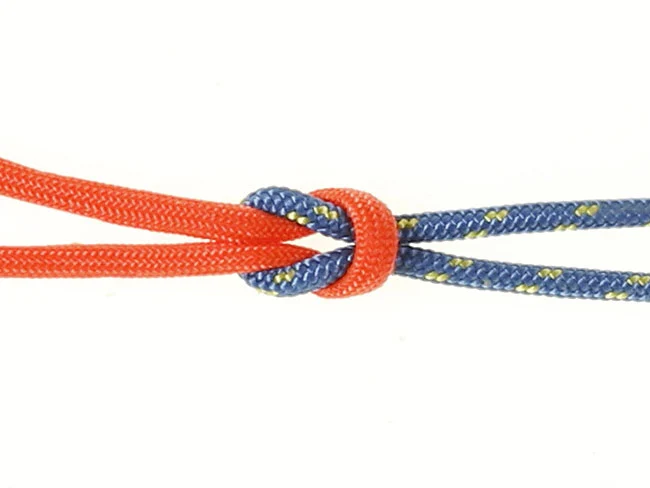
One of the simplest and most natural knots a do-it-yourselfer can tie is the square knot. It consists of just two twists that lock one another in place. When weight is applied, the two twists create a lot of friction between each length, making it ideal for joining two strands of rope to create one long rope. Also useful for joining two or more objects together are square knots. The first twist constricts the items, and the second twist acts as a tight anchor over the first twist, holding everything in place. To make bundles of firewood, timber, or branch easier to carry, they can be tied together.
Clove Hitch
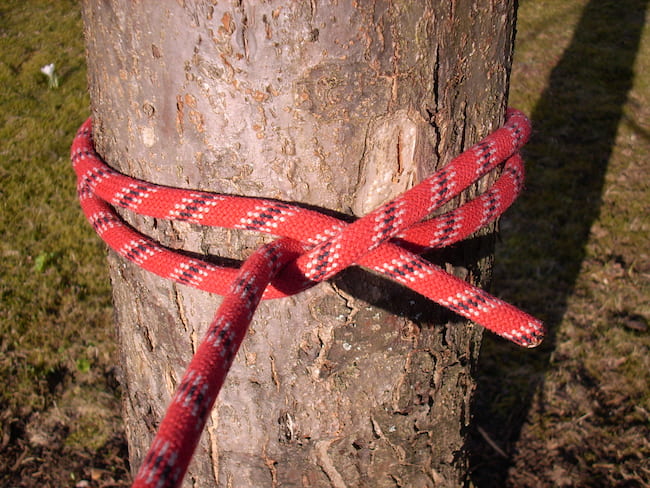
The clove hitch is a useful knot to be familiar with in case of an emergency because it can be used to secure items in a truck bed, a fence post, or a tree. Three ropes are coiled around the object, and one of the ropes generates a lot of friction to hold the other two in place. While it is possible for it to slide, adding a second overhand knot will usually keep it in place as long as the line is taut. The clove hitch can be quickly used to fasten camping tents, patio furniture, and other items that might be blown away in a windstorm. A looped knot that works well is the clove hitch.
Sheet Bend
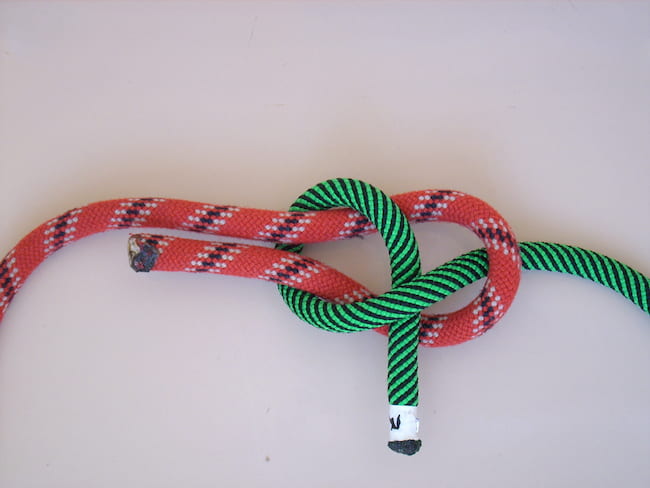
Traditional knots don’t work well when connecting two ropes with different diameters. Rarely does the larger rope generate enough friction to hold the smaller rope in place. In those circumstances, there is no alternative to the traditional sheet bend knot. A strong connection is created when the smaller rope is tightened down over the larger string. Additionally, the sheet bend can be tied on many different fabrics, including sails on boats and tarps without grommets (from which this knot gets its name). Grab some of the material, then bend it into a sheet. Tie it off with an overhand knot to prevent slipping.
Fisherman’s Knot
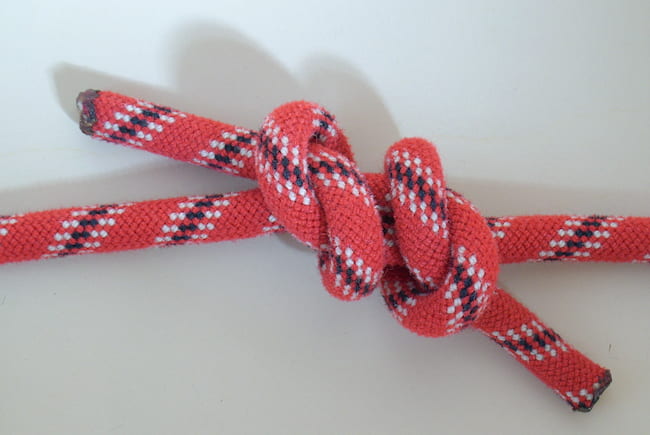
If fishing is not a job or a hobby, there aren’t many uses for the fisherman’s knot. However, there is no substitute if a lot of time and energy are put into pursuing the big one. The fisherman’s knot generates a lot of friction by repeatedly wrapping the working end of the line around the standing end. Because of the slick texture of the fishing line, this knot tightens effectively without sliding. A typical rope might become too frictional if it is tightened. It is one of the few knots that works with fishing line. A modified sheet bend is used when fly fishing. The ideal knot for a fishing hook is the fisherman’s knot.
Water’s Knot
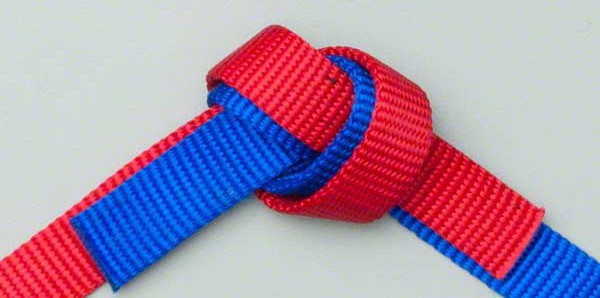
When connecting two pieces of webbing, strapping, or other flat materials, traditional knots rarely get tight enough to create a strong grip. Webbing also has a propensity to bunch, which causes uneven friction. The good news is that a water knot can serve as a fix. It’s a fantastic method for extending the reach of a ratchet strap or other type of webbing material. Use a water knot to join two pieces of webbing together into a single, continuous piece. In essence, it is two overhand knots that are entangled. When properly tied, this knot creates a tight grip and creates friction on all surfaces.
Prusik Knot
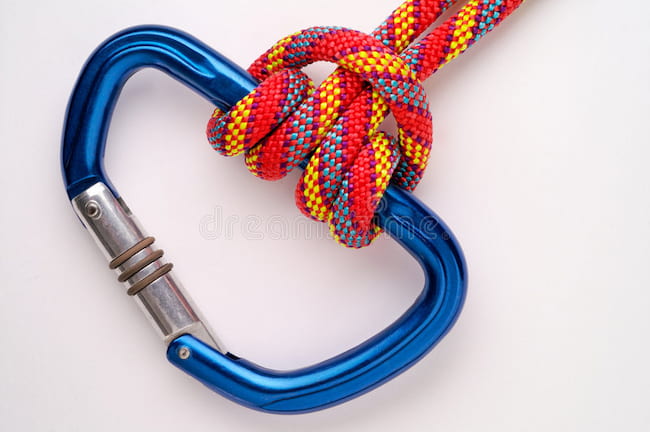
To secure a loop of cord around a rope, climbers, canyoneers, mountaineers, cavers, zipline operators, and arborists use the Prusik friction hitch or knot. Prusik is a word that refers to both the cord loops used to secure the hitch and the hitch itself, as well as the verb “to prusik” (using a Any friction hitch or tool that can grip a rope is referred to as a friction hitch in a more informal sense (see autoblock). The term is frequently spelt as “Prussik,” “Prussik,” or “Prussic” due to its sound.
The Austrian mountaineer Karl Prusik is credited with creating the Prusik hitch, which bears his name. A 1931 Austrian mountaineering guidebook featured the first rope climbing demonstration. On various mountaineering routes, it was used to ascend the final summit where a rope could be thrown over the top and secured, allowing climbers to reach the summit by praising up the opposite side of the rope. The rope attached to a cord Prusik suffers little to no damage. But even with regular use, some mechanical ascenders (not Prusiks) can become damaged, especially if the equipment slides while climbing or is overloaded or subjected to shocks.
Learn how to tie a noose in this article. It is specialized equipment used to corral animals, bundle materials, or set traps.
How to tie a noose is much simpler to learn. As a result, it is a quick option if you need to tie something securely. I’ll update your knowledge in this blog on everything from the upcoming craft project or trap to more advanced topics. Here, we’ll go over step-by-step directions for tying a noose knot.
See more about
Final Words
Knots have been around for thousands of years. In comparison to the ax and the wheel, they are even older. Some experts think that rather than humans, apes and gorillas made the first knot. The number of distinct knot types with a millennia-long history is difficult to quantify. Additionally, a lot of knots are merely combinations of or alterations of other knots. The number of knots you can tie is therefore theoretically infinite. Rope is connected with hitsches around a pole, stick, bumper, or other object.
Another way for users to secure a group of items is with a hitch. Lashings are knots that join two objects, such as ancient axe heads, simple shelter poles, or a hasty fence post repair. Two terms that can help someone tie a knot correctly are working end and standing end. The working end of a knot is the tail, or free end, of the rope that crafters can manipulate to form a knot. The rope’s standing end is where the knot is tightened. We assume you are aware of all the instructions for tying a noose.

